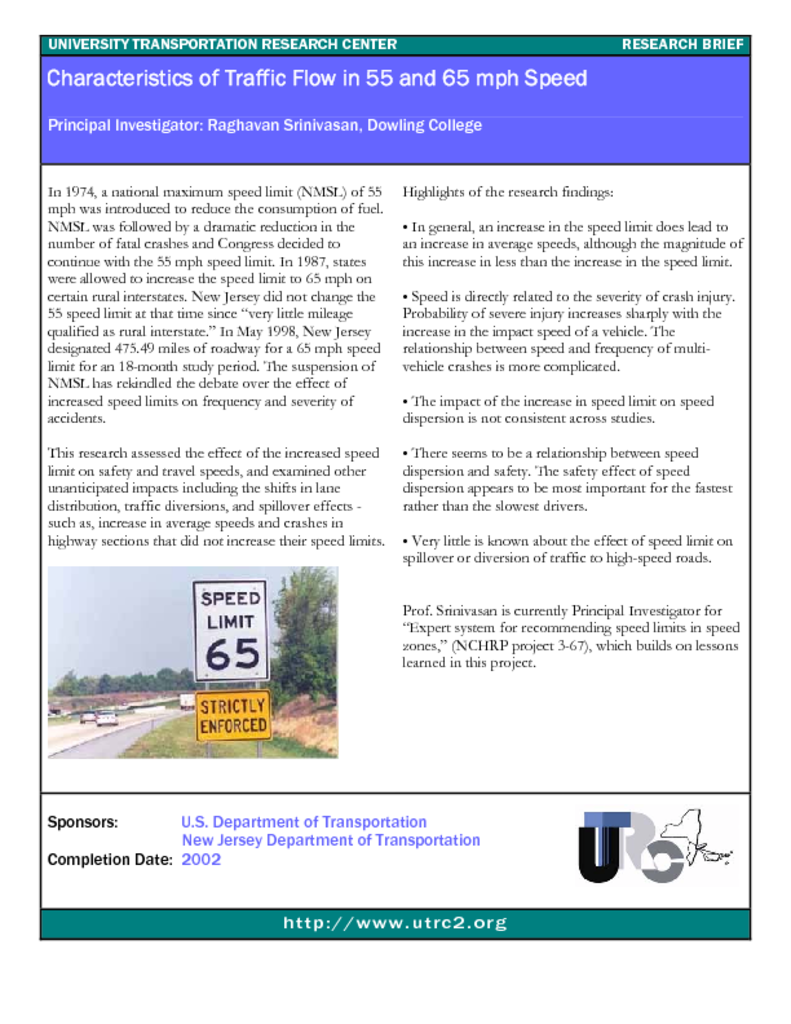In 1974, a national maximum speed limit (NMSL) of 55
mph was introduced to reduce the consumption of fuel.
NMSL was followed by a dramatic reduction in the
number of fatal crashes and Congress decided to
continue with the 55 mph speed limit. In 1987, states
were allowed to increase the speed limit to 65 mph on
certain rural interstates. New Jersey did not change the
55 speed limit at that time since 'very little mileage
qualified as rural interstate.' In May 1998, New Jersey
designated 475.49 miles of roadway for a 65 mph speed
limit for an 18-month study period. The suspension of
NMSL has rekindled the debate over the effect of
increased speed limits on frequency and severity of
accidents.
This research assessed the effect of the increased speed
limit on safety and travel speeds, and examined other
unanticipated impacts including the shifts in lane
distribution, traffic diversions, and spillover effects -
such as, increase in average speeds and crashes in
highway sections that did not increase their speed limits.
Publication Category


